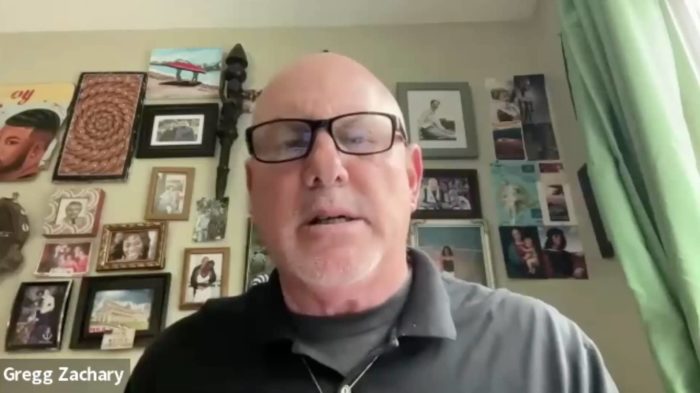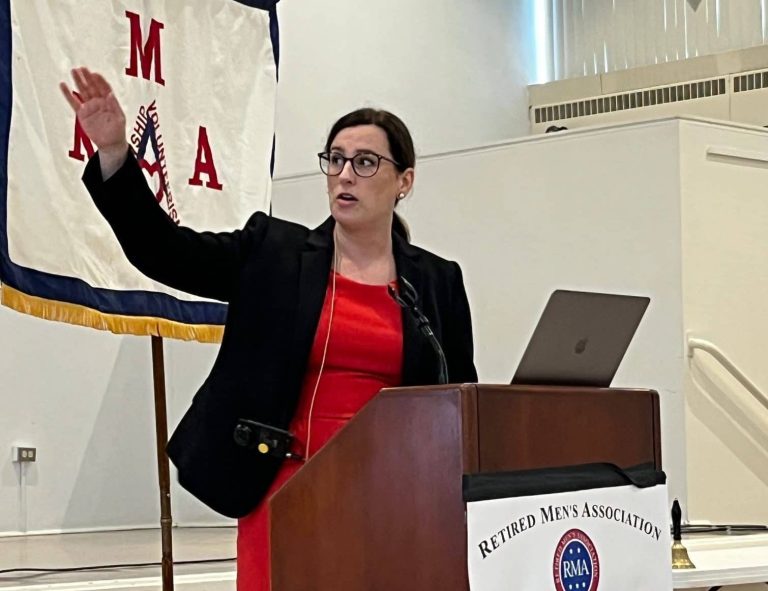
By Arnold Gordon
At the June 14 meeting of the Greenwich Retired Men’s Association, Bob Rimmer introduced the speaker: writer and educator G. Pascal Zachary, who appeared via Zoom. Zachary’s expertise is focused on the history of technological change, national security, and economic growth, and he spoke about his recent book, “Endless Frontier: Vannevar Bush, Engineer of the American Century.” Zachary has taught at Arizona State University, Stanford University, and the University of California at Berkeley, and has consulted on technology development for the Gates Foundation. The National Science Foundation awarded him a grant to study the emergence of computer science as an academic discipline in East Africa. The Atlantic described Zachary as “one of the most insightful and creative thinkers on technology in Africa in the West.” He was a senior science writer for the Wall Street Journal from 1989 to 2002 and was a chief writer on Silicon Valley for The New York Times, The Atlantic, Technology Review, Wired, and Spectrum magazines. Born in Brooklyn, Zachary lives in northern California with his wife, Chizo Okon, of Port Harcourt, Nigeria.
Pascal pointed out that Vannevar Bush is not related to the political family of the same name. His goal was to inform us about one of the most important scientists, engineers and policy influencers of the twentieth century, considered a genius, but who is relatively unknown to the general public. He was born March 11, 1890 in Everett, Mass., and died on June 28, 1974. As an electrical engineer and administrator at MIT, he developed the room-sized Differential Analyzer in 1935 for solving mathematical equations, a harbinger of the digital computer revolution of the 1970s. As early as 1945, he published an article in Atlantic magazine, entitled “As We May Think,” which presciently described the concepts and functionality of the personal computer and foresaw the use of links and hyperlinks as applied today. It has been described as visionary and influential, anticipating many aspects of our information society. Most importantly, as head of the Office of Scientific Research and Development, he oversaw government mobilization of scientific research during World War II and served as a primary conduit to the president, providing information and obtaining approval for next steps. As such he was a senior and highly trusted advisor to Presidents Truman and FDR, and was consulted by Truman on a decision on whether or not to use the atomic bomb in Japan.
Among his many important contributions, he convinced President Truman to establish the National Science Foundation in 1945 and introduced the concept of research contracts for the conduct of original and frontier research, unlike the standard practice of awarding government funds only for tangible products or services. In 1949, at the beginning of the Cold War, he published a very influential book, Modern Arms and Free Men: A Discussion of the Role of Science in Preserving Democracy, which foresaw the military-industrial complex associated with the Eisenhower administration. His legacy extended to the work of two of his PhD graduate students in particular. Frederick Terman earned an ScD in electrical engineering from Massachusetts Institute of Technology in 1924 with Bush as his advisor. Terman became the dean of the school of engineering at Stanford University from 1944 to 1958 and provost from 1955 to 1965 and is widely credited (together with William Shockley) as being the father of Silicon Valley. Claude Elwood Shannon was a 21-year-old master’s degree student under Bush at the Massachusetts Institute of Technology, where he wrote his thesis demonstrating that electrical applications of Boolean algebra could construct any logical numerical relationship. This led to the now standard computer coding use of 0’s and 1’s. A mathematician, electrical engineer, computer scientist and cryptographer, Shannon is known as the “father of information theory.” He contributed to the field of cryptanalysis for national defense of the United States during World War II, including his fundamental work on codebreaking and secure telecommunications.
Bush felt strongly about civilian control of the military, but favored a healthy partnership between the science and engineering community with the military and argued for a careful balance between secrecy and transparency. The latter is much more prominent now than it was in his day.
A lively Q&A followed the talk.
To see the full presentation, go to https://greenwichrma.org, cursor to “Speakers” and click on “Speaker Videos.”
The RMA’s upcoming presentation, “Economic Growth and the Structure of the Connecticut Economy,” is scheduled for 11:00 AM on Wednesday, June 28th. State Representative Stephen Meskers will discuss economic growth and the structure of the Connecticut economy. Strong financial governance has put Connecticut in a solid position to weather potential economic downturns.
According to Meskers, business formation is at 40%, the highest level since 2006; labor force participation is 2.2% above the US average; the state closed fiscal year 2022 with a budget surplus of $1.3 billion, its fourth year of surplus; all four major credit agencies have upgraded Connecticut’s ratings in the last four months; the unemployment rate is on par with the region; the state has eliminated income taxes on pensions and annuities up to $75,000 for a single filer and $100,000 for a married couple and has removed the fiscal cliff which taxed a person’s entire income if they exceeded those amounts. Challenges remain with Connecticut’s rankings and competitive position versus other states, but given its educated workforce, strong university system, and high personal income, Meskers is comfortable that it can overcome the challenges it faces.
Rep. Meskers is well positioned to address these issues. He is vice-chair of the Finance, Revenue and Bonding Committee, and continues to advocate against higher capital gains taxes or a statewide property tax. He wants to accelerate income tax relief on retirement income. He was elected State Representative for the 150th district in 2018, the first Democrat elected from the district in over 100 years. He has a BA from Fordham University in economics and Spanish, and an MBA in finance from the Lubin School at Pace University. Prior to his election he had a 35-year career in emerging markets at Irving Trust, Chemical Bank, and Banco Santander.
To stream the presentation at 11:00 AM on Wednesday, June 28th, click on https://bit.ly/30IBj21. This presentation will also be available on local public access TV channels, Verizon FIOS channel 24 and Optimum (Cablevision) channel 79.
Note: The views expressed in these presentations are those of the speakers. They are not intended to represent the views of the RMA or its members.
RMA speaker presentations are presented as a community service at no cost to in-person or Zoom attendees, regardless of gender. The RMA urges all eligible individuals to consider becoming a member of our great organization, and thereby enjoy all the available fellowship, volunteer, and community service opportunities which the RMA offers to its members. For further information, go to https://greenwichrma.org/, or contact our membership chairman (mailto:members@greenwichrma.org).




